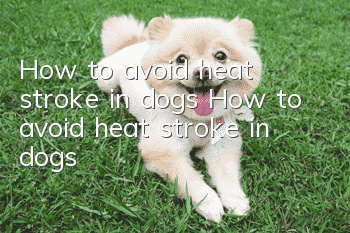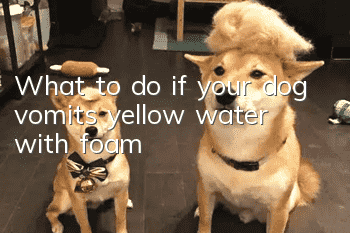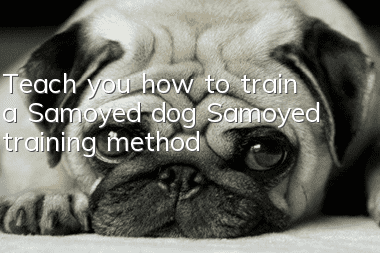How to avoid heat stroke in dogs How to avoid heat stroke in dogs

Methods to avoid heatstroke in dogs:
1. Replenish water. In summer, we must give our dogs more water. Insufficient water can cause many problems. The weather is hot. When we go out, we must add some water to the dog's water basin.
2. Do not leave in the car. Many friends who own private cars often forget their dogs when opening the door and leave them in the car. This may lead to accidents in hot weather.
3. Reduce exercise. The weather is hot. When we interact with dogs, we should not often engage in intense activities. Intense activities are likely to cause heatstroke in dogs. Try to avoid teasing dogs outdoors frequently.
4. Trim hair. If you have a dog with a lot of hair at home, you need to trim the hair appropriately to avoid heatstroke.
5. Don’t take a bath often. In the summer, avoid bathing your dog frequently. Dogs’ skin does not have sweat glands. If you bathe frequently, the oil on the surface will be washed away, and at the same time, the resistance to diseases will be weakened.
Treatment methods for dog heat stroke:
1. Untie the body supplies. Remove chest straps and other coverings and items hanging from the dog's body.
2. Keep away from high temperature environment. Move the dog to a cool place, blow on an electric fan, and cool it with air conditioning. If the dog is conscious, you can give him an appropriate amount of water to drink.
3. Soak in water. While soaking in water, you can gently massage the dog's whole body to help achieve a cooling effect. Stop when the body temperature reaches 39 degrees.
4. Prevent colds. After discovering that the dog's body temperature has dropped, quickly dry the dog's body with a large towel to prevent the body temperature from dropping too quickly. Do not use a hair dryer to prevent the hot air from causing the body temperature to rise again.
5. Send to hospital for treatment. After the first aid treatment is completed, the dog is quickly sent to the pet hospital for continued observation and subsequent treatment.
- Things to note when training a Samoyed
- What should I do if my dog drowns?
- What should I do if my dog has ticks? Teach you a quick and effective way
- At what age is it best to train an East German dog?
- Have you chosen the right thickness of your dog leash? The importance of your pet dog leash!
- What to look out for when buying an Australian Shepherd
- What should I do if my Cotton Veil Dog eats too much and has diarrhea?
- What should I do if my puppy is not eating for several months?
- Fever symptoms and treatments in Nova Scotia duck hunting dogs
- How much does a Newfoundland dog cost and is it easy to raise? Newfoundland dog pictures | price | training



